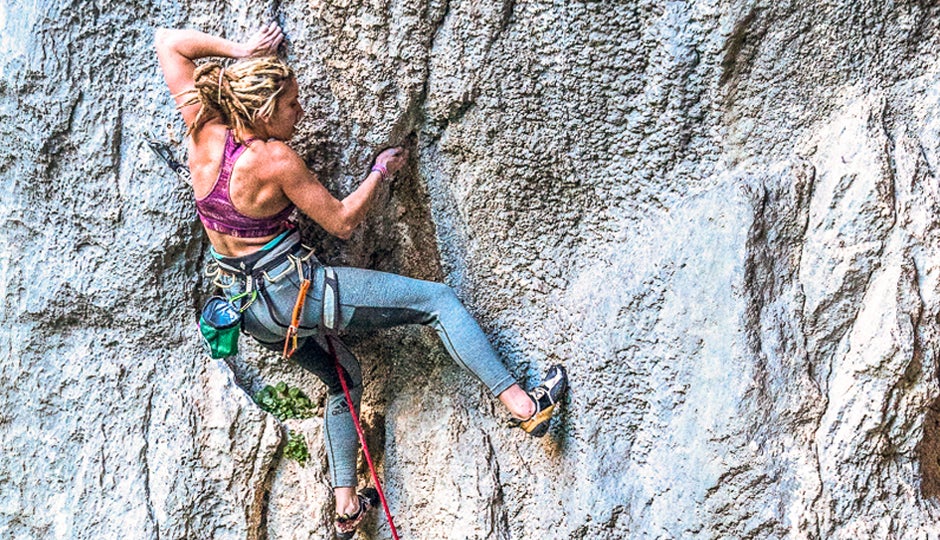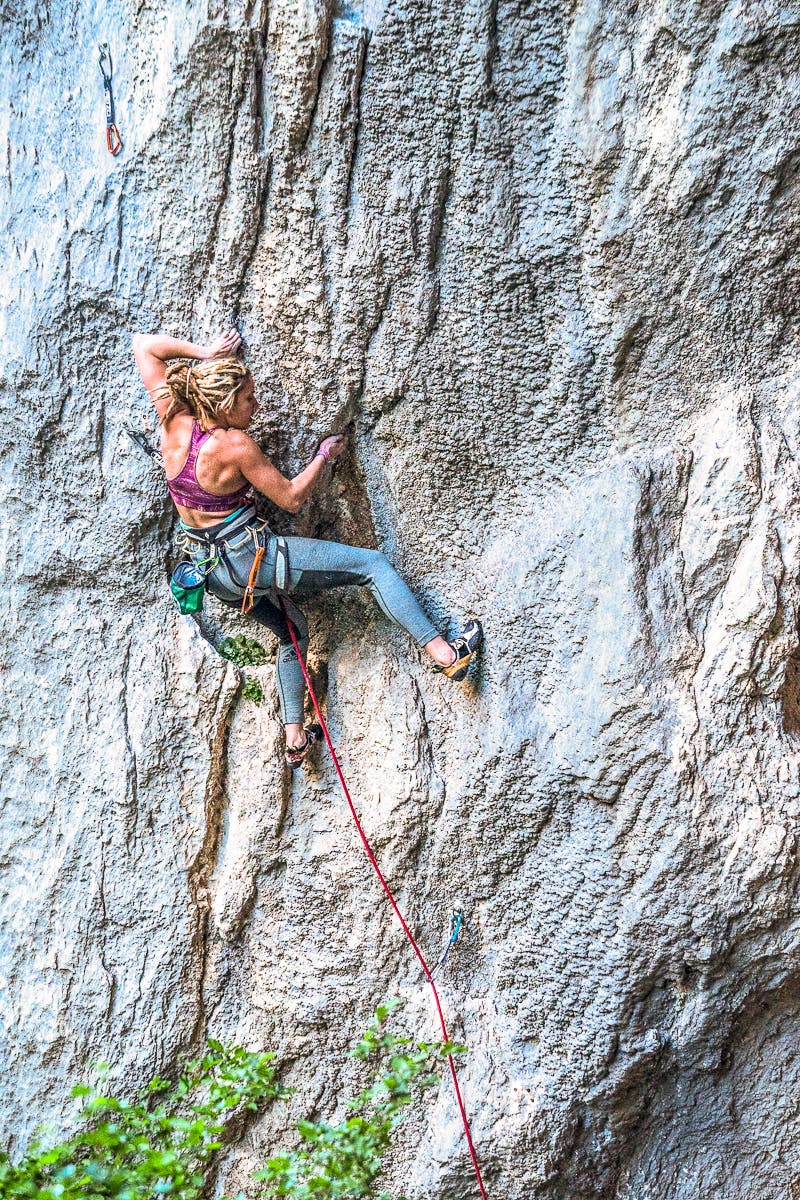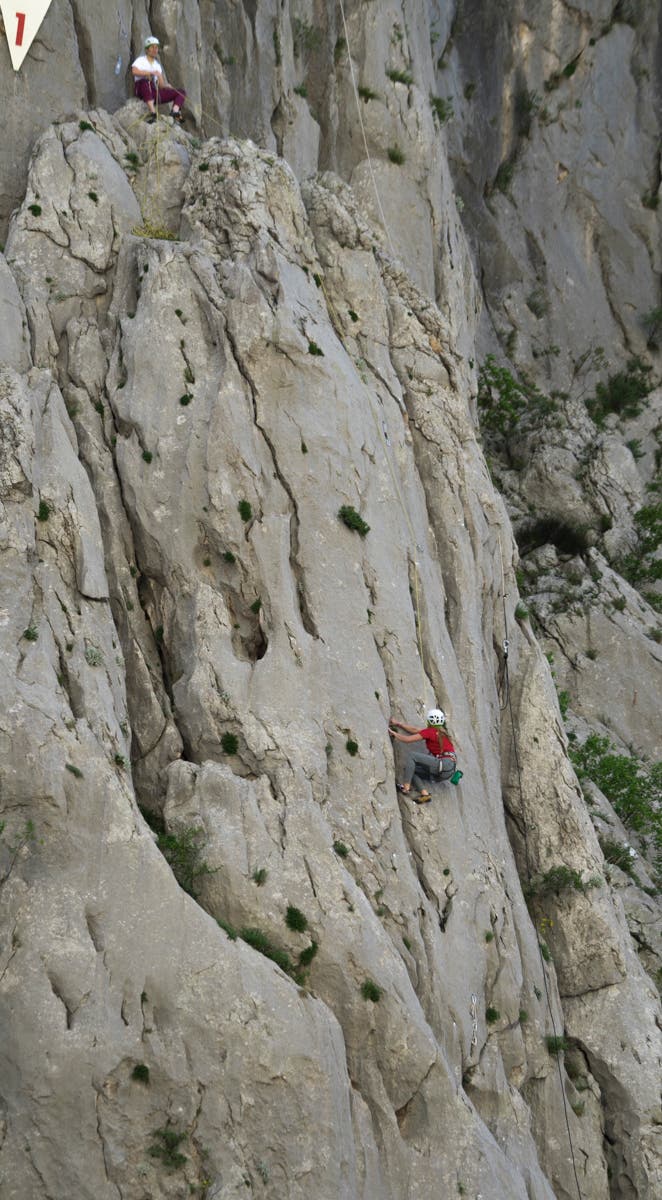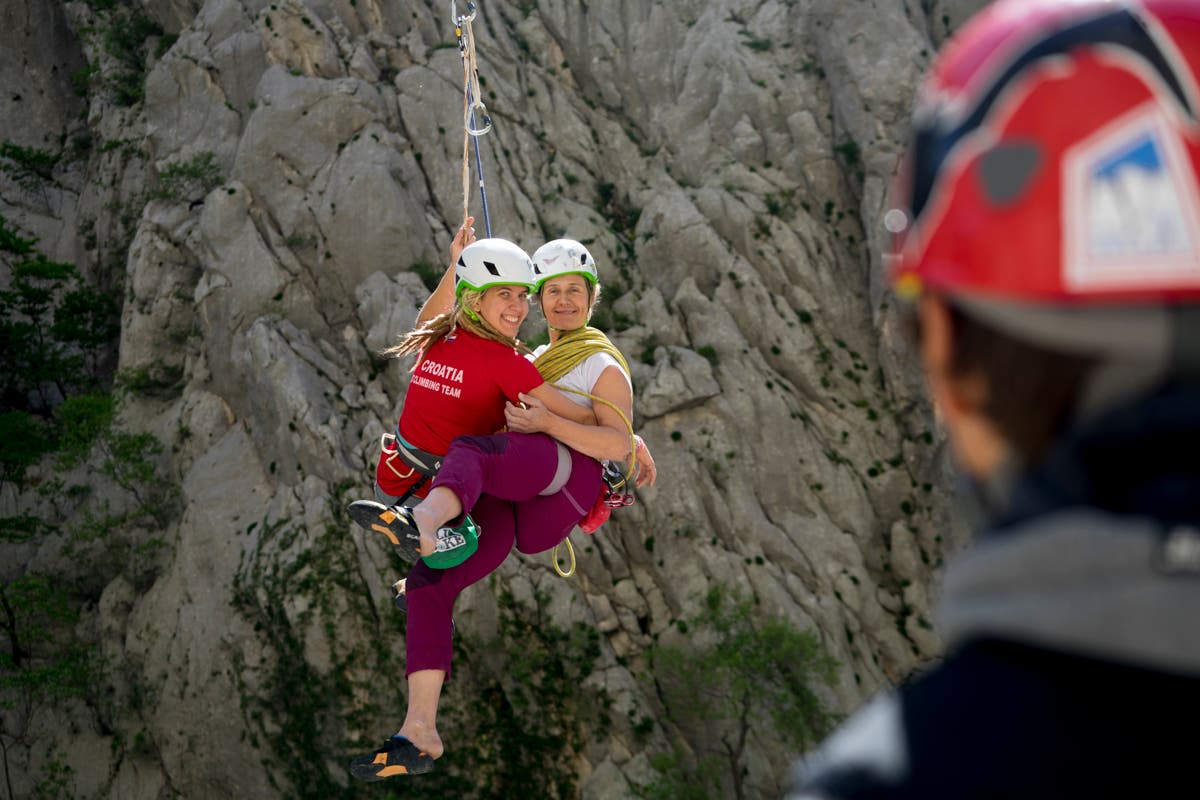The Paklenica International Climbers Meeting: Croatia's Big Wall Speed Climbing Competition

"None"

I watched the first big wall speed climbing (BWSC) team in full go mode from atop the small limestone tower with Luka Havlicek, search and rescue member and rigger. He was waiting for each team to descend the steep, 400-foot tyrolean from atop Karamara across the canyon. Havlicek was excited for the first arrivals, Inga Patarcic and Sunka Hrascanec, the reigning champs. He smiled and said, “I hiked up our local mountain in Zagreb to help her train for this many times. I think now she is wishing she went up a couple more times these last two weeks.” There is 17 years difference between Sunka and her younger partner Inga. But Sunka, reigning champion and in her late 40’s, does not want to stop competing until a younger team de-thrones her.
I was in Paklenica, Croatia, for the International Climbers Meeting, which hosts a number of competitions within the national park during the event. On Friday night the park service sets the stage with a climbing film night and works to grab additional contestants. On Saturday the action kicks off at dawn with the marathon competition that goes until dusk. Teams male, female, and mixed compete in their own divisions for the highest number of routes, factoring in difficulty. Around noon the women’s big wall comp kicks off. Then at 3:00 the men queue up for their big wall route. Sunday is for the youth with a speed comp for kids. The canyon of Paklenica provides a dramatic backdrop with its 1,000-foot walls and easy viewing from the canyon floor. As a spectator its hard to beat chilling with the DJ and dancers and drinking Balkans beer beneath sun umbrellas with front row seats for the action.
Horseshoe Hell, Mellobloco, Terradettes… There are a few big event international climbing events. The Paklenica event celebrated its 20th anniversary this April. Wolfgang the wayward German (my climbing partner) and I casually competed in the marathon category until I got sidetracked by documenting the event and the local Croatian beer, Ozjusko. We stopped after a couple hours, logging a handful or routes each. There was a Serbian competitor, but beyond that I think Wolfgang and I were the only other internationals, despite the fact that the canyon is crawling daily in spring with climbers from all over Europe.

For the scope, longevity, and venue, it seems curious that the Paklenica International Climbers Meeting had a distinct lack of international competitors. The walls that line the canyon and the main access path are ideal for spectators to view the marathon comp as well as the BWSC, and for the marathon climbers to maximize ascents with scores of lines just minutes apart.
Perica Levatic—who has held the BWSC record since 2014 with his brother Jura, climbing the 160-meter, 6c+/5.11c men’s route in 15:16—told me that he believes the event needs international sponsors for much needed marketing support, like Red Bull provided for one year in the early 2000s. This was echoed by other competitors I spoke with. Stefan Glowacz, Daila Ojeda, Dani Andrada, Charlotte Durif, and Brittany Griffith have all competed in years past, but lately it’s been mostly locals. (Check out levaticbros.com to see past competitors and times, as well as the crazy techniques developed by the brothers for speed. It’s no surprise that the Levatic brothers are engineers, because it took some real science and ingenuity to create the techniques they employed, which are still used by the fastest teams.)
Sunka (Suncica Hrascanec), climbing with Igor Corko, was the first Croatian woman to climb El Cap via the Salathé Wall. Sunka competed not only in the BWSC, but with her partner Inga Patarcic, won the marathon category with 40 routes to 7a+/5.12a. It was no small feat, as the competitions were held simultaneously. Sunka was the only competitor to use a hip belay for the women’s BWSC and the only woman to have competed, and won, for 15 years. “The hip belay is [the biggest] time saver because Inga is a really fast follower,” she said. “But I switch to an ATC when she leads.” Their time was 13:44 for 110 meters of climbing, beating their old record by 16 seconds. “I will keep competing until someone younger comes and beats me, but I don’t think it will happen until they really start climbing lots of other big walls besides Karamara.”
Suncica “Sunka” Hrascanec brings up her partner, Inga Patarcic, with a hip belay to save time. Video by Bennett Barthelemy.
This year Iva Bozic and Igor Corko took first in the mixed BWSC category. Corko set the men’s record in 2005 with a sub-16-minute time and held it for 10 years, until the Levatic brothers came along. Iva thinks the competition could use a bit of revamping. “People are scared to sign up and it is dangerous to fall while trying to run through it,” she said. “A fall is also bad in certain spots. Technically you are not supposed to skip bolts, but everybody does to go fast.” When I climbed Karamara with Iva a few days prior, I did notice that the bolts were old and due for replacing.
Iva highlighted the international spirit of the comp by sharing that, “Two years ago there was an Italian team that competed. We saw them later in Dolomites and climbed with them and did a super scary route that we will never do again— but that is the point, to meet others.”
Ena Vrbek is a ski mountaineer who has summited Everest and Cho Oyu and ski descended from the 6,824-meter summit of Pasu II in Pakistan. Every summer she comes back to Croatia to work search and rescue and climb at Paklenica. Ena took second place in the women’s BWSC with her partner Vedrana Simicevic. Ena’s father started with mountain rescue in the 1980s and still works for them. Ena has been on the rescue team since 2005. “Croatian Mountain Rescue is like a family,” she said. “I can speak my mind about what I am feeling and what we can deal with…Being really close really helps.” The members all work and climb together, pushing each other on routes. The sense of success often seems to be more than individual. This tight-knit community of strong locals is counter-productive, however, to their desire to attract international pro climbers to the event—the locals have the routes dialed.

Perica Levatic believes that, “The locals know the BWSC route, as it is the same for years, whilst the pros are pros—they are strong. It would be cool to see if two professional climbers with a week of training can beat locals who are training here for years. In the USA it is happening and Paklenica can stand shoulder to shoulder with these events, as the potential is here.”
When I asked Ena what made the BWSC comp unique she said, “As a spectator, I remember looking at Sunka and Inga. I was so amazed that they climbed a multi-pitch that fast … It requires a different mindset than normal climbing. When you do a speed try everything changes—you do memorize moves, but it’s climbed totally differently. Tempo is key from start to finish, so no mistakes. You have a totally different vision of the route. It is not the same route when climbed for speed or climbed slowly.”
There was a lot of camaraderie among the local competitors this year. It seemed that many of the high-end climbers were part of the Croatian Mountain Rescue Team, and most had even descended from a couple generations of mountain rescue specialists. In the men’s BWSC Ivan Vitez’s team, who works CMRS, took second with a time of 24:29. Iva Bozic also works search and rescue, just like her climbing pioneer father Stipe Bozic did. Stipe is a local legend and documentary filmmaker with El Cap ascents. He completed the seven summits in 2000. It was an honor to sit and share a beer with him at the Restaurant Dinko, where the local climbers hang out just down the road from the park entrance, and hear stories from him. But Iva’s history with CMRS goes beyond her father.
“I got myself into trouble on Anica Kuk,” she said. “Young and stupid, we got lost on the wall. We decided to rappel and the got rope stuck. We couldn’t go anywhere and it was getting dark. Sunka saved me. So when I was 18 I joined CMRS. After [that] we saved ourselves from the walls.”

Ena sees the greatest strength of the comp as providing a good social foundation. “It’s a good opportunity to discover nature and the big climbing potential of Croatia,” she said. “The most important thing is to meet like-minded people through [an] activity that we love while also having fun. We are also more connected to nature during this kind of competition, because we are competing on real rock, which these days I find quite unique. We are really motivated to invite people that can work on beating the records now because we get bored of competing with each other and knowing how we will all place for BWSC. Our biggest challenge now is to get more people with the same drive to come.”